Themed collection FOCUS: Macrocyclic and supramolecular chemistry

Direct synthetic routes to functionalised crown ethers
Modification of crown ethers via grafting of functional groups represents a convenient yet underexplored tool.
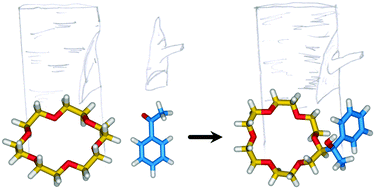
Org. Chem. Front., 2021,8, 5531-5549
https://doi.org/10.1039/D1QO00699A
Turn-on detection of assorted phosphates by luminescent chemosensors
This review illustrates a variety of luminescent chemosensors for the selective detection of assorted phosphates via the “Turn-On” emission mechanism with focus on their design aspects, chemical structures and sensing mechanism.
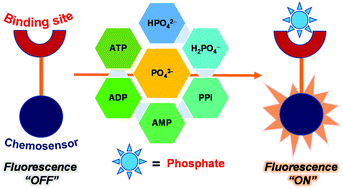
Inorg. Chem. Front., 2021,8, 3587-3607
https://doi.org/10.1039/D1QI00032B
Advancements in the preparation methods of artificial cell membranes with lipids
In order to better understand the structure and function of biological cell membranes, various artificial systems have been developed.
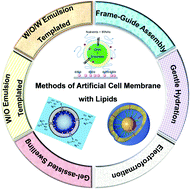
Mater. Chem. Front., 2021,5, 5233-5246
https://doi.org/10.1039/D1QM00501D
A brief review on novel pyrene based fluorometric and colorimetric chemosensors for the detection of Cu2+
This review article provides a detailed overview of pyrene containing colorimetric and fluorometric chemosensors based on different binding mechanisms which fulfill the criteria of affinity, selectivity and sensitivity.

Mater. Chem. Front., 2021,5, 2173-2200
https://doi.org/10.1039/D0QM01008A
Activatable supramolecular photosensitizers: advanced design strategies
Design strategies for activatable photosensitizers (aPSs) in response to tumor-associated stimuli.

Mater. Chem. Front., 2021,5, 1683-1693
https://doi.org/10.1039/D0QM00827C
Supramolecular gels in cyanide sensing: a review
In this review, an up-to-date summary of various reports on cyanide-responsive gels emphasizing the approaches, design principles, and reaction mechanisms has been discussed eloquently.
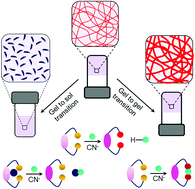
Mater. Chem. Front., 2021,5, 584-602
https://doi.org/10.1039/D0QM00551G
Design of functionally cooperating systems and application towards self-propulsive mini-generators
Progress of ‘functionally cooperating systems’ is reviewed with emphasis on self-propulsion including design of material systems for applications in mini-generators based on horizontal/vertical motions, self-assembly, and directed transportation.
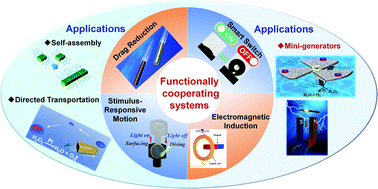
Mater. Chem. Front., 2021,5, 129-150
https://doi.org/10.1039/D0QM00548G
Dynamic lanthanide exchange between quadruple-stranded cages: the effect of ionic radius differences on kinetics and thermodynamics
[Ln2L4]2− helicates easily undergo transmetalation. The lanthanide ionic radius difference (ΔEIR) strongly affects the kinetics of the dynamic process while the thermodynamics is independent and mainly entropy driven.

Inorg. Chem. Front., 2022,9, 4495-4505
https://doi.org/10.1039/D2QI00641C
Interplay between chalcogen bonds and dynamic covalent bonds
A combination of chalcogen bonds, one type of emerging non-covalent bonding force, and imine bonds, allow the control of the dynamic covalent chemistry with orbital interactions and the reversal of kinetic and thermodynamic selectivity.

Org. Chem. Front., 2022,9, 3966-3975
https://doi.org/10.1039/D2QO00684G
Asymmetric living supramolecular polymerization of an achiral aza-BODIPY dye by solvent-mediated chirality induction and memory
Chiral aggregates of achiral aza-BODIPY 1 was obtained in a nearly achiral medium, i.e. a limonene/MCH mixed solvent with a chiral limonene ratio <1% (v/v), by living supramolecular polymerization exploiting the chirality memory of dye 1 aggregates.
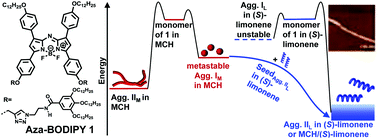
Org. Chem. Front., 2022,9, 3949-3955
https://doi.org/10.1039/D2QO00623E
Achiral copper clusters helically confined in self-assembled chiral nanotubes emitting circularly polarized phosphorescence
Achiral Cu5− cluster coassembled with a chiral amphiphile to afford helical nanotubes, where the Cu5− cluster was confined within the nanotubes, forming helical arrangement with emerged chiroptical activities (CD and CPP), with a large gabs up to 0.018.
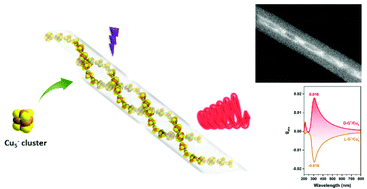
Inorg. Chem. Front., 2022,9, 3330-3334
https://doi.org/10.1039/D2QI00982J
A POM-based porous supramolecular framework for efficient sulfide–sulfoxide transformations with a low molar O/S ratio
A porous supramolecular framework heterogeneously catalyzed the oxidative synthesis of sulfoxides and the detoxification of mustard gas simulants with a low molar O/S ratio.
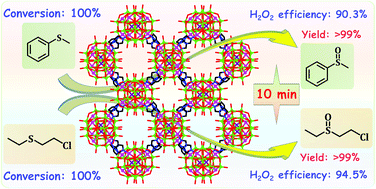
Inorg. Chem. Front., 2022,9, 3282-3294
https://doi.org/10.1039/D2QI00525E
Triple optically modulated and enzymatically responsive organic afterglow materials for dynamic anti-counterfeiting
A dynamic afterglow security label, with wavelength-dependent, temperature-switchable, time-resolved and nanozyme-responsive quad-modulation characteristics and visual verification capability is developed.
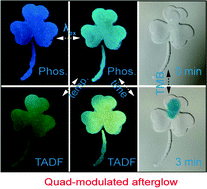
Mater. Chem. Front., 2022,6, 1824-1834
https://doi.org/10.1039/D2QM00235C
A robust and self-healing elastomer achieved by a thio-β-diketone-Cu(II) coordination and H-bonding dual crosslinked system
We report a novel elastomer possessing high stretchability, elasticity and self-healing ability, achieved by thio-β-diketone-Cu(II) coordination and H-bonding dual crosslinking. Flexible sensors are fabricated based on the elastomer.
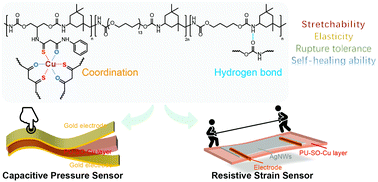
Mater. Chem. Front., 2022,6, 1779-1787
https://doi.org/10.1039/D2QM00259K
Metal ion determined self-assembly using terpyridine building blocks
Complexation between ligand and metal ions with strong binding ability (Co, Zn) afforded tetrameric cages, while trimeric cage can be achieved using weaker binding metal ion (Cd).

Org. Chem. Front., 2022,9, 2343-2350
https://doi.org/10.1039/D2QO00102K
Metal–organic macrocycles with tunable pore microenvironments for selective anion transmembrane transport
We report the self-assembly of a distinct type of four-membered metallacycles with tunable pore microenvironments capable of selective anion transmembrane transport.

Mater. Chem. Front., 2022,6, 1010-1020
https://doi.org/10.1039/D2QM00065B
A photoactive Ir–Pd bimetallic cage with high singlet oxygen yield for efficient one/two-photon activated photodynamic therapy
Photodynamic therapy (PDT) has been extensively studied as a noninvasive treatment option; however, the current PDT agents are often restricted with poor solubility, difficult accumulation in tumor sites, low singlet oxygen yield and low penetration depth.
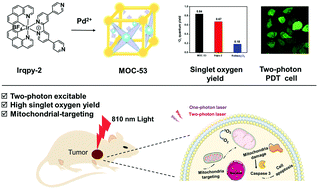
Mater. Chem. Front., 2022,6, 948-955
https://doi.org/10.1039/D1QM01578H
A cucurbit[8]uril-stabilized 3D charge transfer supramolecular polymer with a remarkable confinement effect for enhanced photocatalytic proton reduction and thioether oxidation
A water-soluble porous supramolecular polymer is assembled through a CB[8]-based 2 + 2 host–guest binding motif, which can greatly increase the efficiency of photocatalysis.
![Graphical abstract: A cucurbit[8]uril-stabilized 3D charge transfer supramolecular polymer with a remarkable confinement effect for enhanced photocatalytic proton reduction and thioether oxidation](/en/Image/Get?imageInfo.ImageType=GA&imageInfo.ImageIdentifier.ManuscriptID=D1QO01939B&imageInfo.ImageIdentifier.Year=2022)
Org. Chem. Front., 2022,9, 1327-1335
https://doi.org/10.1039/D1QO01939B
Reaction induced supramolecular gelation with the evolution of circularly polarized luminescence
Chemically reaction triggered formation of supramolecular gels and enhancement of emission.

Mater. Chem. Front., 2022,6, 593-599
https://doi.org/10.1039/D1QM01654G
Highly polar stacking interactions wrap inorganics in organics: lone-pair–π-hole interactions between the PdO4 core and electron-deficient arenes
Each PdO4 plane of Pd3(OAc)6 behaved as a 5-center nucleophile (O lone pairs and the dz2-PdII orbital) that interacts with π-donating arenes to afford highly polar circular stacking, where organics wrapped inorganics.
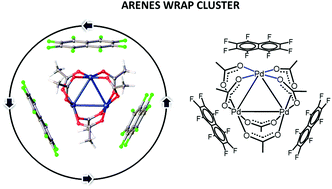
Inorg. Chem. Front., 2021,8, 4965-4975
https://doi.org/10.1039/D1QI01067K
A supramolecular dual-donor artificial light-harvesting system with efficient visible light-harvesting capacity
A supramolecular dual-donor artificial light-harvesting system with efficient visible light-harvesting capacity was constructed through the hierarchical self-assembly approach.
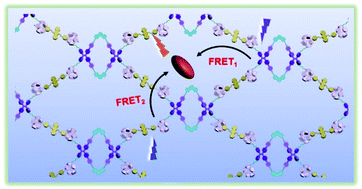
Org. Chem. Front., 2021,8, 5250-5257
https://doi.org/10.1039/D1QO00771H
Efficient one-pot synthesis of [3]catenanes based on Pt(II) metallacycles with a flexible building block
Three [3]catenanes were fabricated in high efficiency through the self-assembly of a 90° platinum(II) receptor, a flexible bis(4,4′-bipyridinium) donor and a crown ether (DB24C8 or DB30C10).
![Graphical abstract: Efficient one-pot synthesis of [3]catenanes based on Pt(ii) metallacycles with a flexible building block](/en/Image/Get?imageInfo.ImageType=GA&imageInfo.ImageIdentifier.ManuscriptID=D1QO00910A&imageInfo.ImageIdentifier.Year=2021)
Org. Chem. Front., 2021,8, 5280-5288
https://doi.org/10.1039/D1QO00910A
Extended enantiopure ortho-phenylene ethylene (o-OPE)-based helical systems as scaffolds for supramolecular architectures: a study of chiroptical response and its connection to the CISS effect
Versatile enantiopure helical systems are described and are of interest owing to their intense chiroptical responses, their attractive architecture for metallosupramolecular chemistry and CISS effect.

Org. Chem. Front., 2021,8, 5071-5086
https://doi.org/10.1039/D1QO00822F
Aryl carbazole-based macrocycles: synthesis, their remarkably stable radical cations and host–guest complexation with fullerenes
Herein, we have designed and synthesized a series of aryl carbazole-based macrocycles and their stable radical cation species and interesting fullerene recognition were systematically investigated.

Org. Chem. Front., 2021,8, 4678-4684
https://doi.org/10.1039/D1QO00686J
Mechanical bonding activation in rotaxane-based organocatalysts
Interlocked organocatalysts show enhanced catalytic performance when compared with their non-interlocked threads.The ring cooperatively activates the substrates, facilitating the formation and stabilization of catalytically active intermediates.
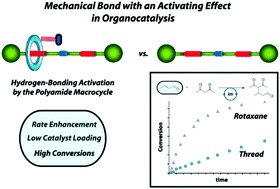
Org. Chem. Front., 2021,8, 4202-4210
https://doi.org/10.1039/D1QO00789K
J-aggregation induced emission enhancement of BODIPY dyes via H-bonding directed supramolecular polymerization: the importance of substituents at boron
For uracil-functionalized BODIPY dyes 1a–c, AIEE upon H-bonding directed J-aggregation was observed for the two dyes bearing alkyne groups at boron while the BF2-chelated dye displayed ACQ, indicating the crucial role of the substituents at boron.

Org. Chem. Front., 2021,8, 4078-4085
https://doi.org/10.1039/D1QO00520K
Pillar[5]arene-based ion-pair recognition for constructing a [2]pseudorotaxane with supramolecular interaction induced LCST behavior
Here, we report a novel [2]pseudorotaxane based on perbromoethylated pillar[5]arene/imidazolium iodide ionic liquid ion-pair recognition and this pseudorotaxane shows supramolecular interaction induced LCST behavior in solution.
![Graphical abstract: Pillar[5]arene-based ion-pair recognition for constructing a [2]pseudorotaxane with supramolecular interaction induced LCST behavior](/en/Image/Get?imageInfo.ImageType=GA&imageInfo.ImageIdentifier.ManuscriptID=D1QO00457C&imageInfo.ImageIdentifier.Year=2021)
Org. Chem. Front., 2021,8, 3675-3680
https://doi.org/10.1039/D1QO00457C
Dual-stimuli pseudorotaxane switches under kinetic control
Dual-stimuli pseudorotaxane switches: Threaded complexes dissociate upon deprotonation or oxidation. A mechanical bond changes the influence of a ‘speed bump’ on the outcome of a switching event.

Org. Chem. Front., 2021,8, 3659-3667
https://doi.org/10.1039/D1QO00503K
Clover leaf-shaped supramolecules assembled using a predesigned metallo-organic ligand
A series of clover-like supramolecular structures were designed and synthesized using a combination of Ru–Zn, Ru–Co, Ru–Mn or Ru–Ni metal ions. These structures with distinct redox properties may have further applications as functional materials.

Org. Chem. Front., 2021,8, 3244-3249
https://doi.org/10.1039/D1QO00336D
Self-assembled luminescent Cu(I) tetranuclear metallacycles based on 3,3′-bipyridine ligands
Three luminescent tetranuclear macrocycles are obtained selectively, applying coordination-driven supramolecular processes to the reaction of 3,3′-bipyridine ligand with in situ formed Cu(I) bimetallic units bearing a coordination angle of ca. 120°.
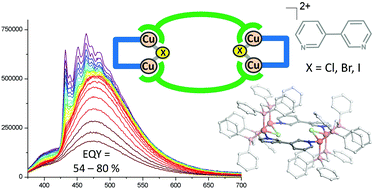
Org. Chem. Front., 2021,8, 2893-2902
https://doi.org/10.1039/D1QO00538C
Corannulene-based nanographene containing helical motifs
The synthesis and structural analyses of corannulene-PAH hybrids 1 with a [4] helicene subunit and 2 with a [7] helicene subunit have been reported.

Org. Chem. Front., 2021,8, 2970-2976
https://doi.org/10.1039/D1QO00366F
Supramolecular fluorescence sensing of L-proline and L-pipecolic acid
Fluorescent mono-phosphonate calix[4]pyrrole cavitands display selectivity in amino acids' sensing.
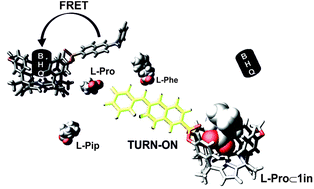
Org. Chem. Front., 2021,8, 2402-2412
https://doi.org/10.1039/D1QO00517K
Electron belt-to-σ-hole switch of noncovalently bound iodine(I) atoms in dithiocarbamate metal complexes
The nature of metals in the isostructural series of dithiocarbamate complexes affects the electron belt-to-σ-hole switch of noncovalently bound iodine(I) leading to either semicoordination, or halogen bonding.
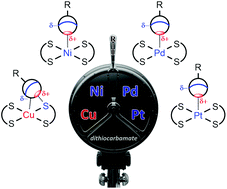
Inorg. Chem. Front., 2021,8, 2505-2517
https://doi.org/10.1039/D1QI00314C
Guest-boosted phosphorescence efficiency of a supramolecular cage
The quantum yield and emission lifetime of the inclusion complexes can be fine-tuned via the variation of halobenzene guests.
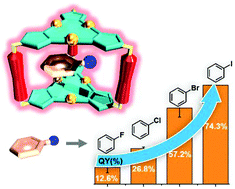
Inorg. Chem. Front., 2021,8, 2299-2304
https://doi.org/10.1039/D1QI00033K
Reversible fluorescence modulation through the photoisomerization of an azobenzene-bridged perylene bisimide cyclophane
An azobenzene-bridged perylene bisimide cyclophane was designed and synthesized, which showed reversible fluorescence intensity switching under light-irradiation due to cooperative adjustments of PBI–PBI and PBI–Azo interactions.

Org. Chem. Front., 2021,8, 1424-1430
https://doi.org/10.1039/D0QO01635G
Sequence-controlled supramolecular copolymer constructed by self-sorting assembly of multiple noncovalent interactions
A sequence-controlled supramolecular copolymer was constructed by self-sorting assembly of metal coordination and two types of host–guest interactions.

Org. Chem. Front., 2021,8, 1117-1124
https://doi.org/10.1039/D0QO01540G
Dinuclear anthracene-containing alkynylplatinum(II) terpyridine complexes with photo-modulated self-assembly behaviors
Facilitated by Pt⋯Pt, π–π stacking and hydrophobic interactions, a new series of dinuclear anthracene-containing alkynylplatinum(II) terpyridine complexes is found to exhibit intriguing photo-modulated self-assembly behaviors upon photooxygenation.

Mater. Chem. Front., 2021,5, 2409-2415
https://doi.org/10.1039/D0QM00972E
Color-tunable luminescent materials via a CB[8]-based supramolecular assembly strategy
This research revealed a class of fluorescent materials which have a response to humidity, based on simple small molecules via a CB[8]-based supramolecular assembly strategy, in which the materials’ fluorescent properties can be dynamically controlled.
![Graphical abstract: Color-tunable luminescent materials via a CB[8]-based supramolecular assembly strategy](/en/Image/Get?imageInfo.ImageType=GA&imageInfo.ImageIdentifier.ManuscriptID=D0QM01029D&imageInfo.ImageIdentifier.Year=2021)
Mater. Chem. Front., 2021,5, 2347-2352
https://doi.org/10.1039/D0QM01029D
Facile construction of well-defined radical metallacycles through coordination-driven self-assembly
In this article, well-defined radical metallacycles were efficiently constructed through coordination-driven self-assembly, which displayed interesting chiral self-sorting behavior as well as very weak radical-based luminescence.
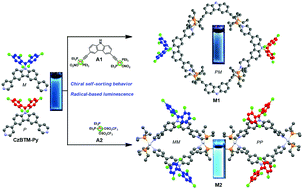
Mater. Chem. Front., 2021,5, 1863-1871
https://doi.org/10.1039/D0QM00992J
Understanding the self-ordering of amino acids into supramolecular architectures: co-assembly-based modulation of phenylalanine nanofibrils
Amino acids have emerged as promising molecular frameworks for the generation of functional materials owing to the bio-compatibility and thermodynamic stability of their self-assembled architectures.

Mater. Chem. Front., 2021,5, 1971-1981
https://doi.org/10.1039/D0QM00784F
Supramolecular nanoparticles constructed from pillar[5]arene-based host–guest complexation with enhanced aggregation-induced emission for imaging-guided drug delivery
Supramolecular nanoparticles with enhanced aggregation-induced emission are prepared by taking advantage of pillar[5]arene-based host–guest complexation, and are sophisticated nanocarriers for imaging-guided drug delivery.
![Graphical abstract: Supramolecular nanoparticles constructed from pillar[5]arene-based host–guest complexation with enhanced aggregation-induced emission for imaging-guided drug delivery](/en/Image/Get?imageInfo.ImageType=GA&imageInfo.ImageIdentifier.ManuscriptID=D0QM00974A&imageInfo.ImageIdentifier.Year=2021)
Mater. Chem. Front., 2021,5, 1418-1427
https://doi.org/10.1039/D0QM00974A
Fluorescence visualization of cucurbit[8]uril-triggered dynamic host–guest assemblies
Dynamic assemblies of π-conjugated bispyridinium guests with cucurbit[8]uril in aqueous solution could be distinguished by real-time naked-eye observation of the resulting quantitative fluorescence emissions.
![Graphical abstract: Fluorescence visualization of cucurbit[8]uril-triggered dynamic host–guest assemblies](/en/Image/Get?imageInfo.ImageType=GA&imageInfo.ImageIdentifier.ManuscriptID=D0QO00649A&imageInfo.ImageIdentifier.Year=2021)
Org. Chem. Front., 2021,8, 32-38
https://doi.org/10.1039/D0QO00649A
About this collection
This online collection highlights some exciting research about macrocyclic and supramolecular chemistry that recently appeared in Inorganic Chemistry Frontiers, Organic Chemistry Frontiers and Materials Chemistry Frontiers.
Articles featured in our focus collections are handpicked by Editors. We hope you find them enjoyable to read.